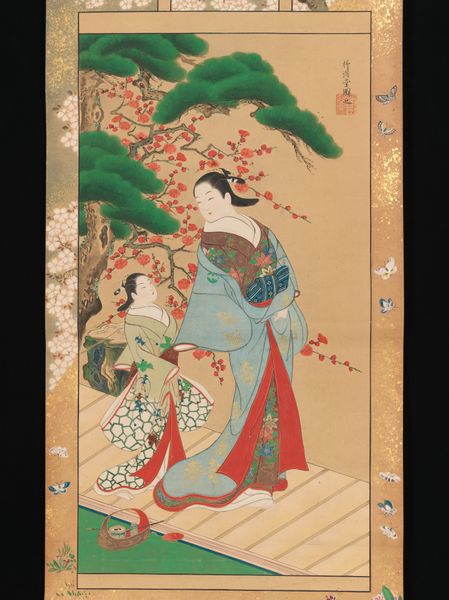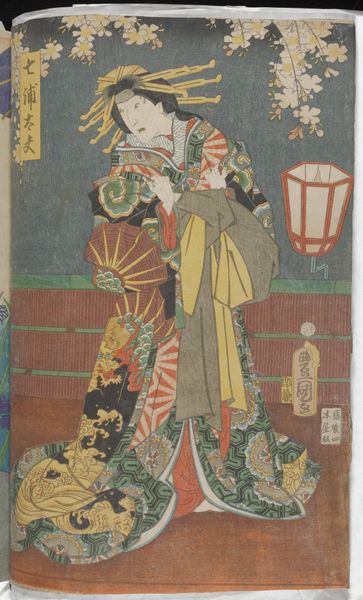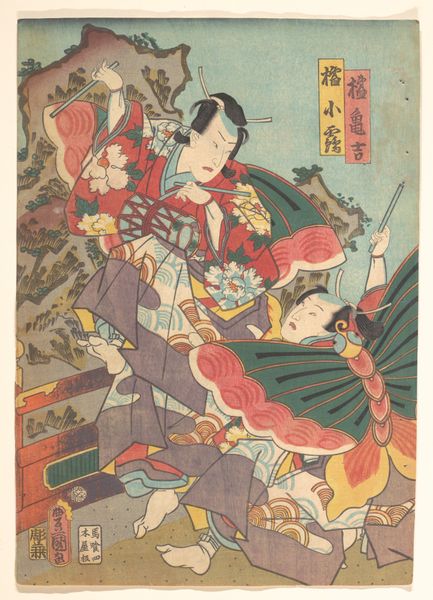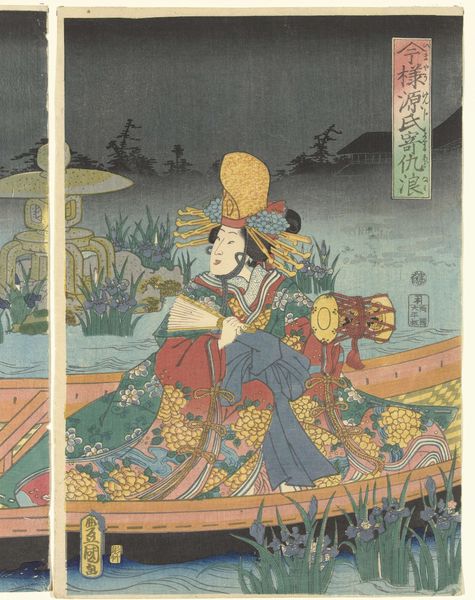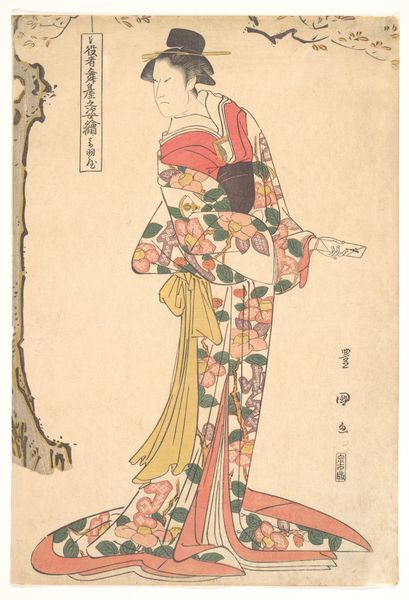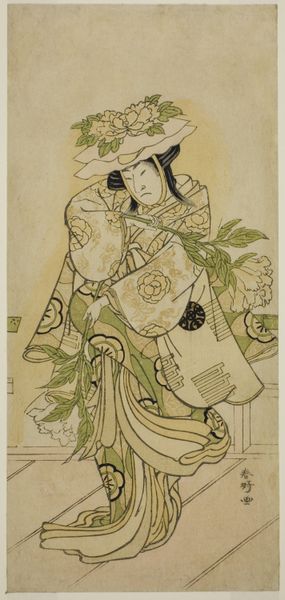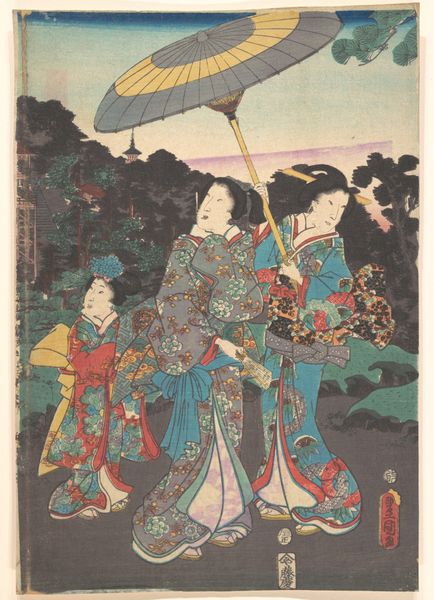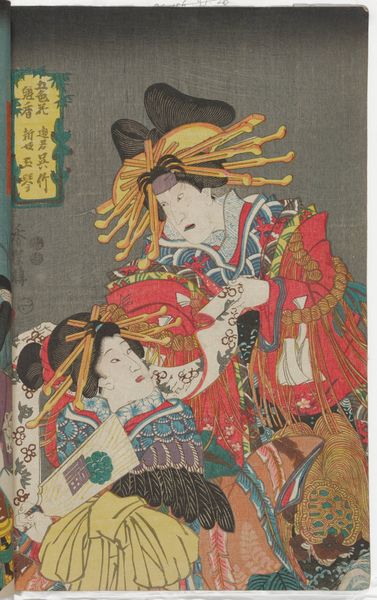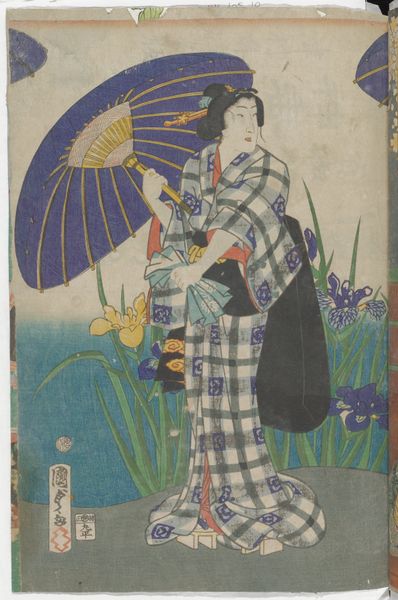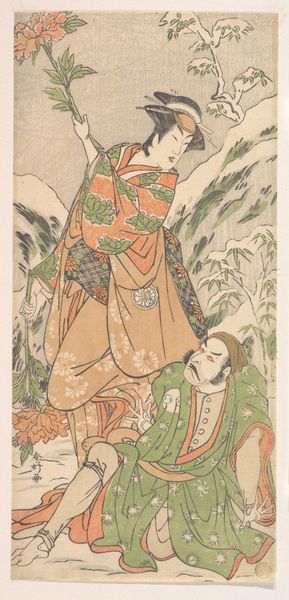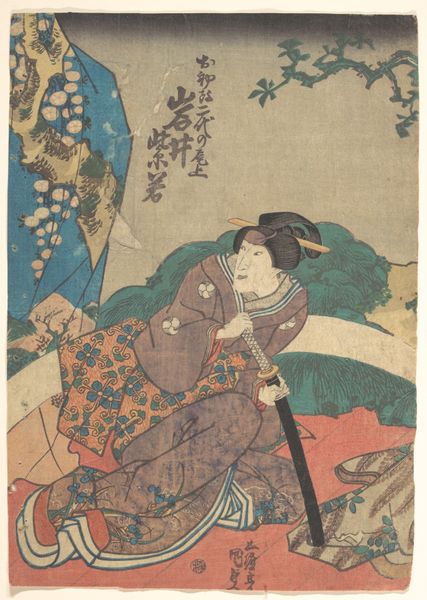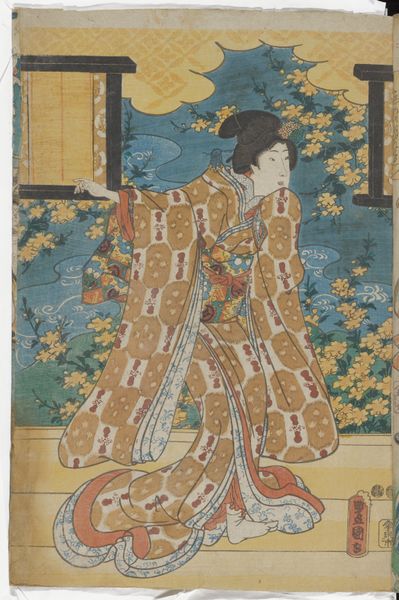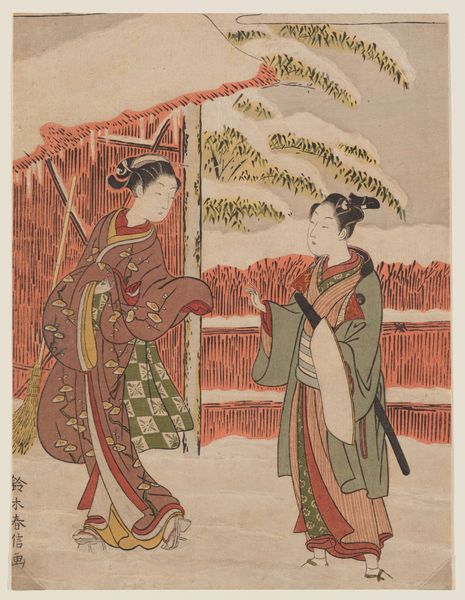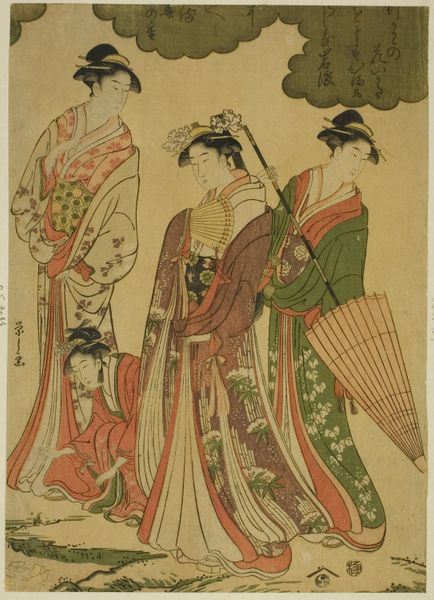
print, ink, woodblock-print
#
portrait
#
ink painting
# print
#
asian-art
#
ukiyo-e
#
figuration
#
ink
#
woodblock-print
#
naive art
Dimensions: 14 3/8 × 10 1/16 in. (36.5 × 25.5 cm) (image, sheet, vertical ōban)
Copyright: Public Domain
Editor: Here we have "Mountain Witch," a woodblock print from 1848 by Utagawa Kunisada. I'm immediately drawn to the subject's elaborate kimono and slightly melancholic expression. It's quite captivating. What strikes you most about this ukiyo-e piece? Curator: What immediately grabs my attention is the cultural context. This wasn't just a pretty picture. Ukiyo-e prints like these were mass-produced. Consider the intended audience; how might these images of mythical figures reflect or reinforce societal values or beliefs? How would they interact with them? Editor: That's fascinating. I hadn’t considered the "mass-produced" element, and the idea of *interacted* images, beyond simple aesthetics. It feels so distant from our modern conception of art, doesn’t it? Curator: Indeed! Think about censorship at the time. How might the portrayal of a “Mountain Witch” subvert, even slightly, traditional expectations for women’s roles or challenge the governing authorities? This work speaks to the complex relationship between art, power, and the public. The character may allude to historical or fictional women and thus was well-understood by the contemporaries. Editor: So, the artist could use a figure like a mountain witch to make commentary that would fly under the radar, because it could also just be… a picture of a witch? Curator: Precisely! It highlights the ingenuity of artists navigating social constraints, and gives a hint how contemporary viewers decoded and understood it. And, in museums, aren’t we constantly re-negotiating this relationship between the art and public even today? Editor: Definitely! I see how this isn’t just a print of a woman; it’s a window into social dynamics and artistic expression under pressure. Thank you for this insight! Curator: And thank you! Examining such pieces allows us to rethink not only how art was created, but also how the act of viewing art is steeped in the socio-political history.
Comments
No comments
Be the first to comment and join the conversation on the ultimate creative platform.
